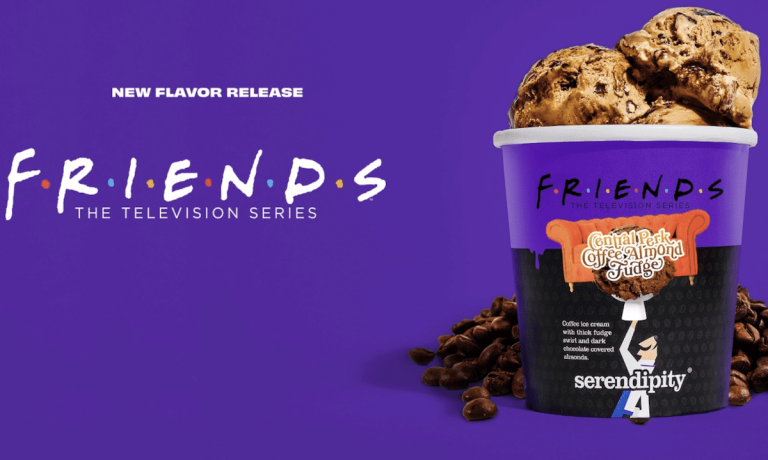
Since the start of the pandemic, many restaurant brands have been finding ways to package their brands into products that can be sold at retail stores. While these restaurants may have been turning to packaged goods as a way to make ends meet, when denied the revenue stream of dine-in customers during lockdown, one popular New York City restaurant was ahead of the curve.
Serendipity3, the Upper East Side New York City landmark known for its frozen hot chocolate, began selling ice cream pints back in 2019. Since then, the brand has also added “Frrrozen Hot Chocolate Mix” to its roster, with more products soon to come. This month, the restaurant reopened, newly renovated. Sal Pesce, president and chief operating officer at Serendipity Brands, spoke with PYMNTS about leveraging the brand’s icon status to make it in the packaged goods space.
“When the restaurant was acquired, we wanted to make serendipity into an iconic national brand, and the first segment we went into was super-premium ice cream,” said Pesce. “We recreated a lot of the iconic Serendipity desserts in an ice cream form … and it was a great experience. It was overwhelmingly accepted by the retailers.”
The restaurant and its assets were sold to a group of investors in 2018, and in August 2020, musical artist and actress Selena Gomez announced that she had become an owner (and had partnered with the brand on a new ice cream flavor). Pesce revealed that the brand will also be releasing cookies in the fall of 2021.
The Power Of The Brand
While the restaurant is deeply tied in people’s minds to the city in which it sits, most of its business comes from out-of-towners.
“We realized that 70 to 75 percent of the people who come to the restaurant are tourists, so it is a huge tourist attraction, not just in the States, but internationally,” said Pesce. Guessing at where this international appeal came from, he said, “We think the movie had something to do with it,” referring to the 2001 rom-com “Serendipity,” in which characters played by John Cusack and Kate Beckinsale connect over the restaurant’s desserts.
The fact that the restaurant’s appeal lies primarily with people who live outside the city may not be ideal if it were trying to build a following of loyal, returning customers — but it’s great for creating a consumer-packaged-goods (CPG) brand that will appeal to grocery shoppers all over the country.
As Pesce noted, “You talk to people across the nation, and even if they haven’t been to the restaurant, they recognize it.”
The NYC-CPG Pipeline
Developing an entire CPG business is a costly undertaking, and not all restaurants that try are successful. However, there seems to be something special about New York City restaurants that makes them a little more likely to succeed in the space. Pesce pointed to Rao’s Homemade — the premium tomato sauce brand that emerged from New York’s Rao’s Italian food restaurant — as a prime example of a successful restaurant-to-CPG transition.
“There’s the United States, and then there’s New York City. There’s the world, and then there’s New York City,” said Pesce. “The iconic hotspots like Serendipity and Rao’s — it’s just a fantasy … so I think when there’s an opportunity, when you have the right fit and the right trademark, and you make the right products, it resonates very well with consumers.”
PYMNTS recently spoke with Eric Skae, the CPG veteran who is taking the New York Italian-American restaurant Carbone into the jarred sauces space, about leveraging the brand’s appeal to sell sauces direct-to-consumer (D2C).
“Carbone has been very successful, but as a restaurant, there is only a select [number] of consumers you can reach on any given night,” said Skae. “By offering our sauces both in-store and online, we’re able to give more people the opportunity to enjoy our sauces no matter how they shop.”
Like Carbone Fine Foods, Serendipity Brands is also selling its products direct-to-consumer (D2C) through its online shop, while also selling on Amazon and QVC and at a wide range of brick-and-mortar retailers. Pesce noted that iconic New York restaurants “have that mystique about [them].” This exclusivity that comes from having a line out the door, he noted, gets consumers excited at the chance to enjoy the brand at home.
Going For The Bronze
Pesce said that the company’s ice creams are “doing extremely, extremely well in a very tough segment — we’re really making a dent in that segment.”
The brand’s main competitor is Ben & Jerry’s, as both brands offer fun flavors full of toppings and mix-ins, which is a difficult position, given that Unilever-owned Ben & Jerry’s has far more resources at its disposal. Pesce noted that in the last couple of decades, no newcomers have successfully challenged incumbents’ leads to pull ahead in the super-premium pint segment.
“The only one that came close really was Talenti, and even its sales have declined tremendously over the last four to five years,” he said. “Other than that, there’s really been nobody to [gain] a foothold against Ben and Jerry’s and Häagen-Dazs, so that’s the biggest challenge right now.”
Still, he predicts that given Serendipity’s brand recognition, it is well-positioned to succeed where others have failed. The company has already partnered with a wide range of iconic properties, including “Friends” and “Caddyshack,” with “A Christmas Story” pint coming in November, generating a huge amount of attention for the brand.
“One year from now, we will be talking about how we are probably the No. 3 selling ice cream pint in the country,” Pesce said. “That’s where I think we’ll be sitting.”